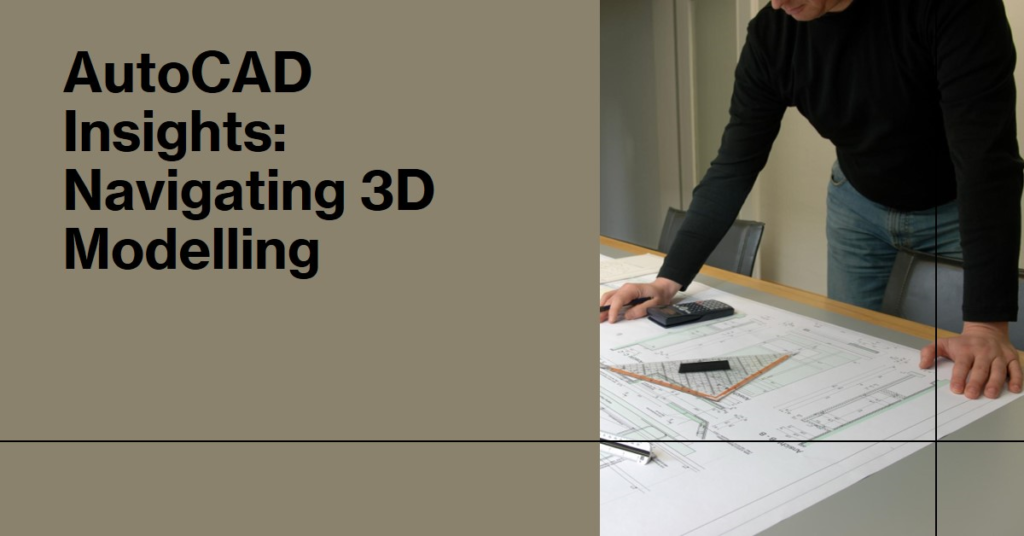
Table of Contents
- Introduction to 3D Modeling in AutoCAD:
- Getting Started with 3D Modeling Tools:
- Techniques for Efficient 3D Modeling:
- Advanced 3D Modeling Features and Applications:
- Optimizing Performance for Large-Scale Projects:
- Integrating 3D Modeling with Other AutoCAD Features:
- Collaborative Design and Workflow Management:
- Best Practices for 3D Modeling in AutoCAD:
- Future Trends in 3D Modeling with AutoCAD:
- Conclusion:
Introduction to 3D Modeling in AutoCAD:
In the world of CAD (Computer-Aided Design), AutoCAD stands out as a powerful tool for both 2D and 3D modeling. While 2D drafting is its foundation, 3D modeling capabilities have evolved significantly, offering engineers, architects, and designers robust tools for creating complex designs. This section introduces the importance of 3D modeling in AutoCAD and its applications across industries.
AutoCAD’s transition from primarily 2D to a 3D modeling powerhouse has revolutionized design workflows. Architects can now visualize buildings in 3D, engineers can simulate intricate mechanical components, and product designers can create prototypes with precise dimensions. The shift to 3D modeling in AutoCAD has not only enhanced design accuracy but also improved collaboration and communication among project stakeholders.
Getting Started with 3D Modeling Tools:
Before diving into complex projects, mastering the basics of AutoCAD’s 3D modeling tools is essential. This section explores the fundamental tools and commands that form the building blocks of 3D modeling. From extruding simple shapes to manipulating objects in 3D space, understanding these tools sets the stage for more intricate designs.
AutoCAD’s interface for 3D modeling retains familiarity for those accustomed to 2D drafting while introducing powerful new features. Commands like Extrude, Revolve, and Sweep enable users to transform 2D sketches into 3D models effortlessly. Navigating these tools effectively requires practice and an understanding of how to apply them in various design scenarios.
Techniques for Efficient 3D Modeling:
Efficiency is key in professional CAD environments. This section delves into techniques and strategies that streamline the 3D modeling process in AutoCAD. From organizing layers and groups to utilizing parametric modeling features, adopting these practices enhances productivity and model clarity.
Parametric modeling in AutoCAD allows designers to establish relationships between objects and their parameters. By defining constraints and dimensions, changes to one part of the model automatically update related components. This iterative approach not only saves time but also ensures design integrity throughout the modeling phase.
Advanced 3D Modeling Features and Applications:
Going beyond basic shapes, AutoCAD offers advanced features that cater to complex design requirements. This section explores features like lofting, boolean operations, and mesh modeling, which empower designers to create intricate and realistic 3D models.
Boolean operations in AutoCAD enable users to combine or subtract geometric shapes, facilitating the creation of complex forms with precise cutouts and intersections. Additionally, mesh modeling provides flexibility in handling irregular shapes and refining details that go beyond traditional solid modeling techniques.
Optimizing Performance for Large-Scale Projects:
As projects scale up in complexity, optimizing AutoCAD’s performance becomes crucial. This section discusses strategies for managing large-scale 3D models, including file organization, hardware considerations, and software customization.
AutoCAD’s ability to handle large-scale projects hinges on effective management of resources and data. Techniques such as using external references (Xrefs) to link models, optimizing viewport settings, and leveraging hardware acceleration ensure smooth operation even with intricate designs.
Integrating 3D Modeling with Other AutoCAD Features:
AutoCAD’s versatility extends beyond 3D modeling alone. This section explores how 3D models interact with other AutoCAD features such as annotation, rendering, and documentation. Seamless integration enhances workflow continuity and facilitates comprehensive project documentation.
Annotations in AutoCAD allow designers to add dimensions, notes, and labels directly to 3D models, ensuring clarity in design intent. Coupled with rendering capabilities, which simulate lighting and material textures, these features transform models into compelling visual presentations for clients and stakeholders.


Collaborative Design and Workflow Management:
Effective collaboration is essential in modern design environments. This section examines how AutoCAD’s collaborative tools facilitate teamwork and streamline workflow management. From version control to cloud integration, these features ensure project continuity and efficiency.
AutoCAD’s collaborative tools enable multiple team members to work on the same project simultaneously, with real-time updates and version history tracking. Integration with cloud platforms allows for seamless file sharing and access, regardless of geographical location, fostering global collaboration on design projects.
Best Practices for 3D Modeling in AutoCAD:
Drawing from industry standards and expert advice, this section outlines best practices for 3D modeling in AutoCAD. From maintaining model accuracy to adhering to naming conventions, these practices uphold quality and consistency throughout the design process.
Adhering to best practices not only enhances individual productivity but also promotes uniformity across team projects. Consistent use of layers, object properties, and model space organization ensures that designs are easy to navigate and modify, even as projects evolve over time.
Future Trends in 3D Modeling with AutoCAD:
Looking ahead, this section explores emerging trends and innovations in 3D modeling technology within AutoCAD. From artificial intelligence-driven design assistance to advancements in virtual reality integration, these developments shape the future landscape of CAD software.
The future of 3D modeling in AutoCAD lies in harnessing AI for automated design optimizations and predictive modeling. Virtual reality (VR) integration promises immersive design experiences, allowing stakeholders to interact with models in real-time and visualize projects at scale before construction begins.
Conclusion:
Mastering 3D modeling in AutoCAD requires a blend of technical proficiency, creative vision, and adherence to best practices. As technology continues to evolve, so too will the capabilities of AutoCAD, empowering designers to push the boundaries of innovation in their respective fields.
This structured approach not only educates users on the intricacies of 3D modeling within AutoCAD but also highlights its transformative impact on design workflows across industries. By adopting these insights and techniques, designers can leverage AutoCAD’s full potential to create, visualize, and communicate their ideas effectively.


